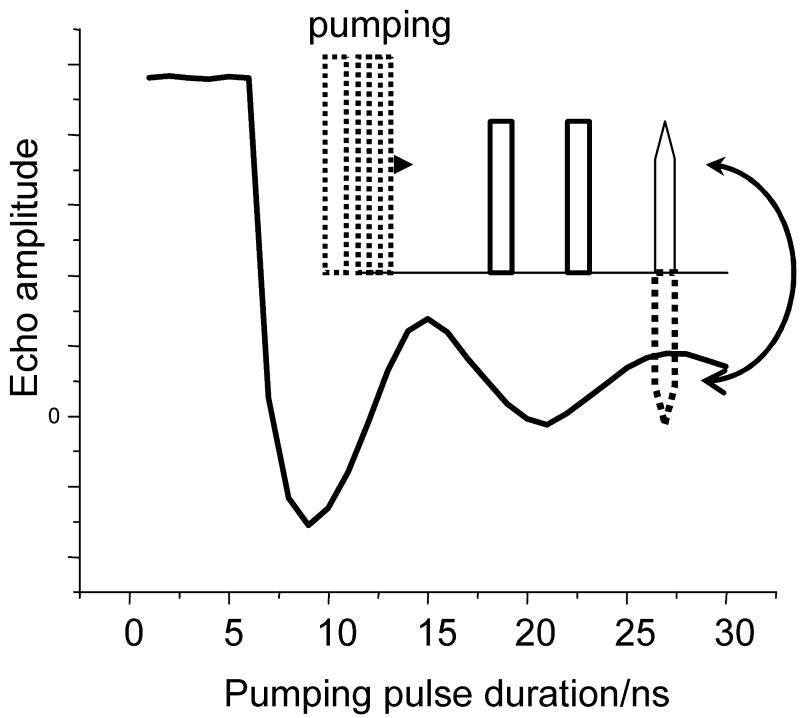Fig. 2.
Test of the Ka-band resonator performance by means of the nutation experiment. The pulse sequence is shown in the insert. The sample used in this experiment was 0.25 mM C2-Gd595 in water-glycerol (1:1, v:v) solution. Experimental conditions: B0=1.0806 T (maximum of −½↔½ transition); operational frequency: 29.964 GHz; temperature: 15K; durations of second and third pulses: 20 ns; separation between first and second pulses: 500 ns. The absence of a pumping pulse during the initial seven nanoseconds is due to an insufficient switching speed of the TTL driver. The effective duration of the π-pulse is given by the position of the first minimum and is approximately equal to 9ns.

